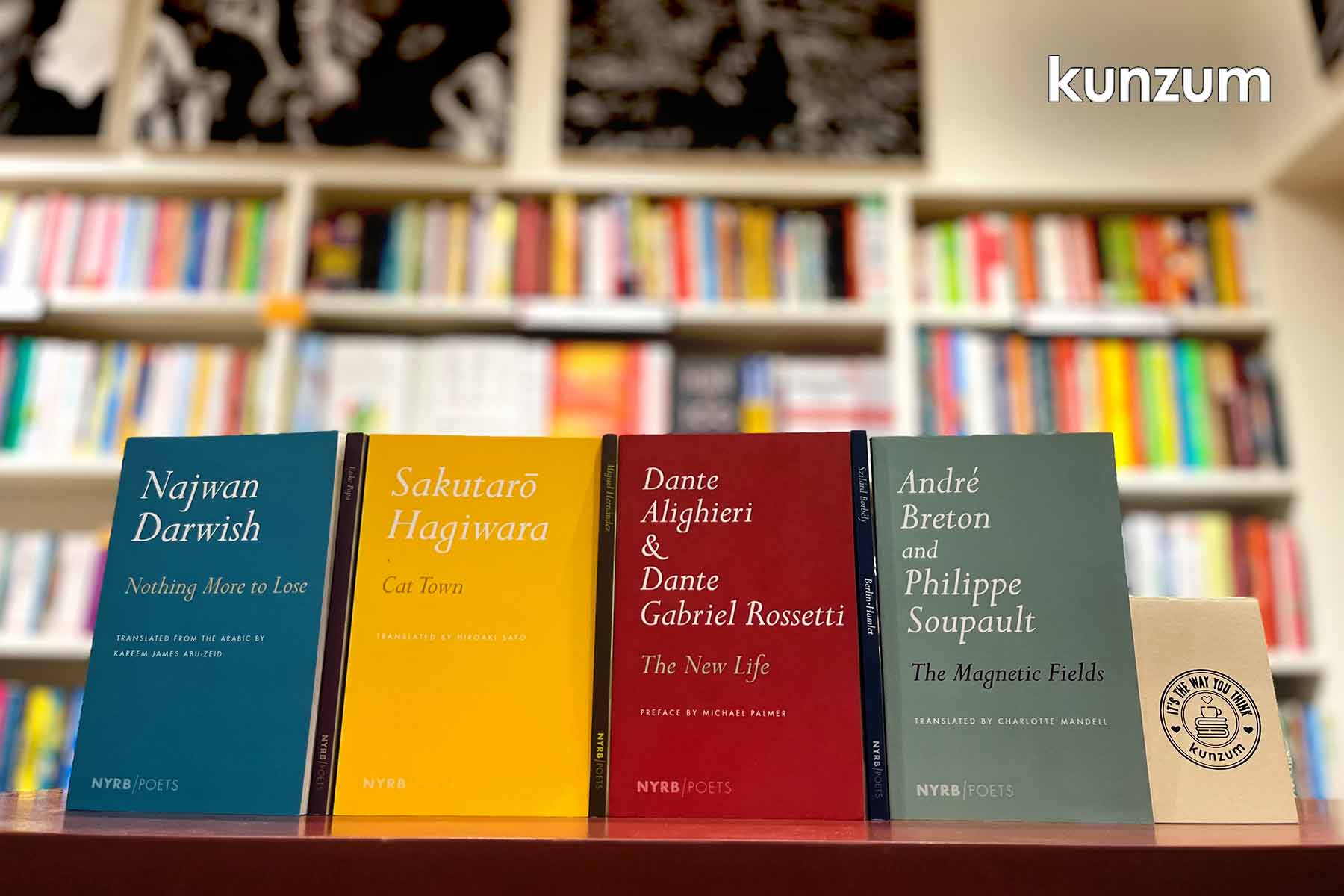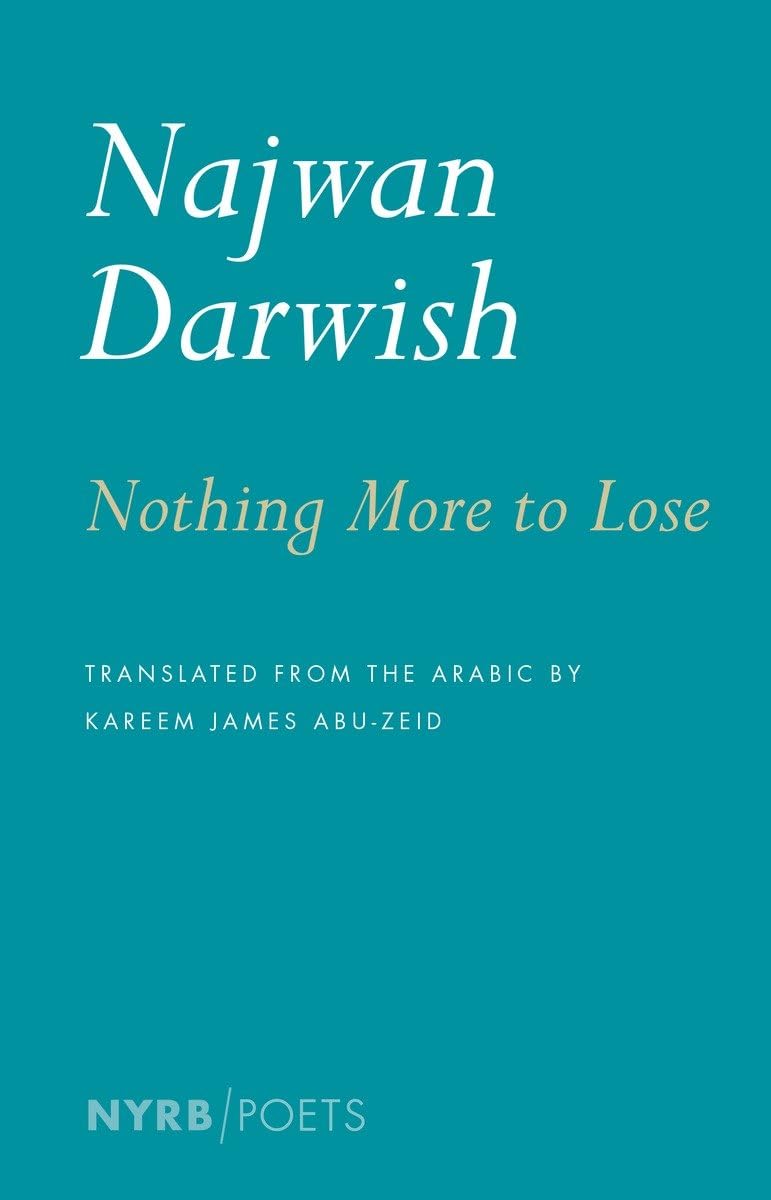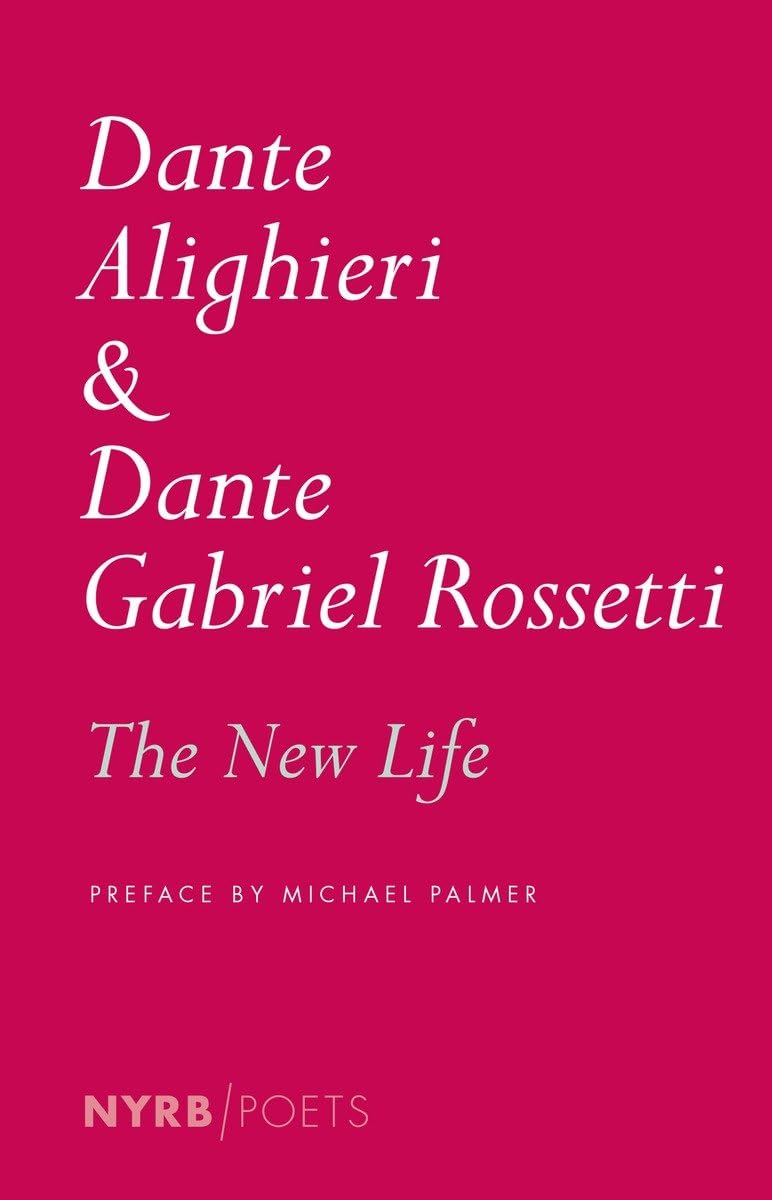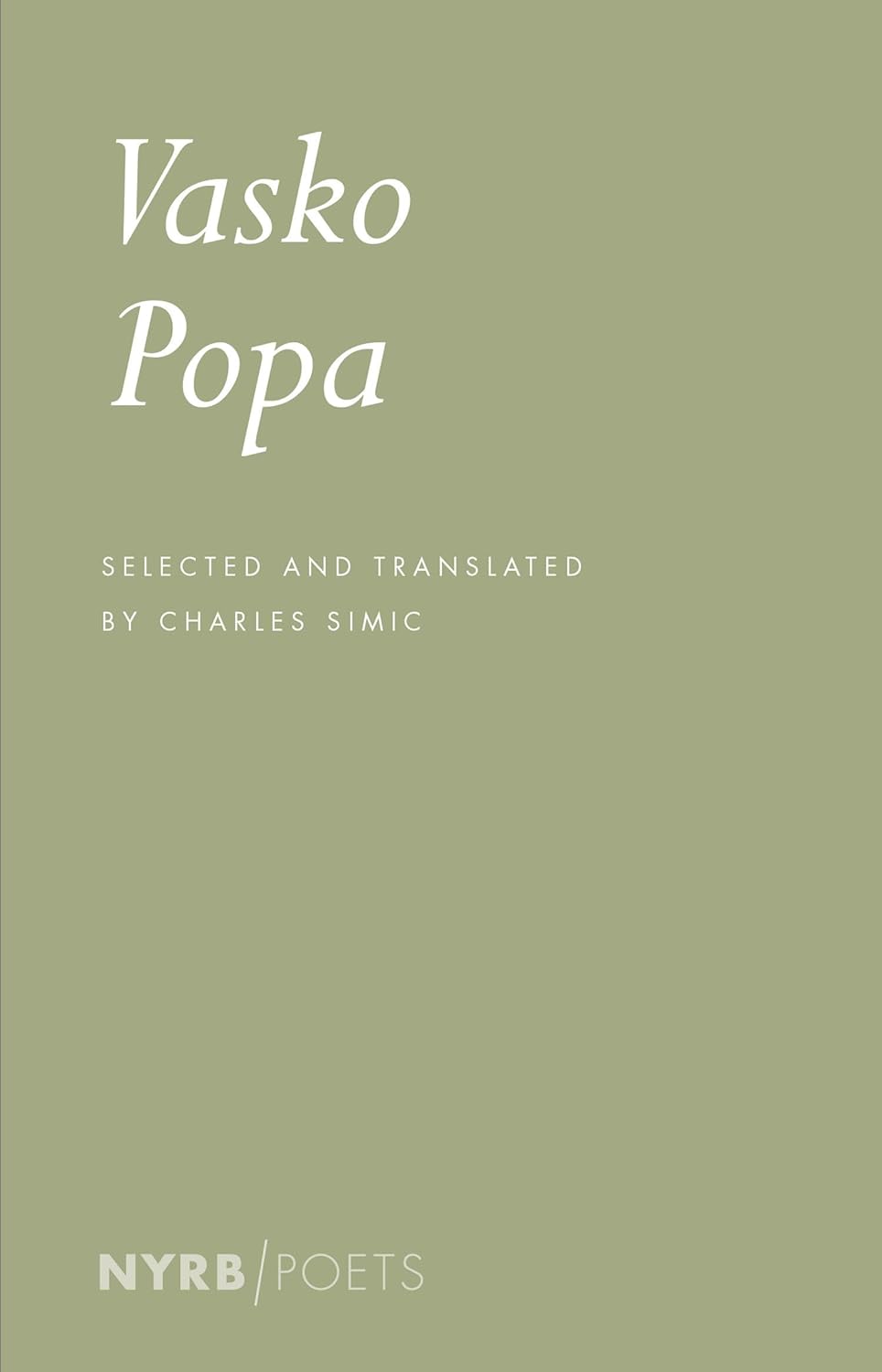
NYRB or New York Review Books is the seasoned and impressive publishing arm of the illustrious “New York Review of Books”, a brilliant semi-monthly literary magazine that continues to defend the value of literary conversations and discourse. Founded in 1999, the NYRB doesn’t just publish books, but truly rebrands and revives their significance. Boasting of an ever-growing series of published books, containing Classics, Poets, Comics and Children’s Literature, NYRB’s copies are identifiable by their design and its distinct aesthetic language.
Introducing you to prominent literature from across the world, containing both crucial contemporaries as well as canonised classics, the NYRB Poets series emerges as a worthy catalogue for poet-loving intellectuals and diversity-starved readers. Of those, we have picked our favourite seven:)

Nothing More to Lose by Najwan Darwish
First of Palestinian poet Darwish’s poetry collections to appear in English, Nothing More to Lose is truly representative of the great Arab’s passionate and imaginative poetics. Employing vivid imagery and dark humour to explore the despair and resistance characteristic of the harsh political reality of being a Jerusalem-born Arab Palestinian. Including meditations on identity, justice and equality, this collection promises to be an evocative and radical rewriting of traditional narratives that offers a fresh perspective on his homeland.

Cat Town by Sakutarō Hagiwara
When modernist poet Sakutarō Hagiwara published his first novel, Howling at the Moon, it completely transformed the landscape of Japanese poetics, with its raw emotions and experimental writing posing a direct challenge to traditional writing forms. A free verse writer from the early Showa era, Hagiwara is known as the “father of modern colloquial poetry in Japan” for effectively liberating Japanese verse. This collection best celebrates his pioneering literature, composed of excerpts from the best of his work, as well as the entirety of Howling and his prose novella Cat Town.

The New Life by Dante Alighieri and Dante Gabriel Rossetti
The iconoclast who rejected Latin for Florentine vernacular, Dante Alighieri’s Vita Nova and Divine Comedy effectively established Italian as a literary language and shaped its modern-day form. Interestingly, both texts greatly feature his muse and love, Beatrice Portinari. The New Life or Vita Nova combines prose and verse as it reinvents the mediaeval tradition of courtly love. Deeply affected by the untimely death of his Beatrice, a young Dante preserves the divinity of his love in this collection, cataloguing everything, from the first time he saw her to the experience of mourning her loss. Translated in English by 19th-century poet Dante Gabriel Rossetti, this version of The New Life truly revives the brilliance of Alighieri’s love literature and gives us the Dante-meets-Dante meet-cute we never knew we needed.

Vasko Popa
Not a poem called “Vasko Popa”, this is a collection of works from the great 20th century Serbian poet, translated from the original Slavic-Croatian by Charles Simic, a major figure within American poetry. A blend of folklore, surrealism and dark humour, Popa’s literature traverses existential themes of mortality, nature and the human condition through a deeply original lens. Translated over a quarter of a century after they were written, this collection introduces the surrealist visions and fatalistic humour of Popa to English readers.

Miguel Hernández
Translated by Don Share, a renowned American translator of Latin American and Spanish Literature, this curated collection celebrates the poetry and literature of revolutionary Spanish poet and playwright Miguel Hernández. Tracing his evolution from being a nature-loving shepherd poet to an emblazoned voice in the Spanish Civil War, Miguel Hernández is a bilingual collection that preserves the original right alongside its meticulous translation.

Berlin-Hamlet by Szilárd Borbély
A haunting exploration of sensorial Berlin, Berlin-Hamlet contains reworked fragments of text that create a deliriously composed imagist representation of the city. Containing the best of Hungarian poet Szilárd Borbély’s poetics, a man who was a recognised great before his untimely death, it contains fragments of text from Kafka, Benjamin and a host of Hungarian poets, blending in multiple voices and images to evoke post-1989 Berlin and its attempts at reconstruction post-Germany’s unification. It sings of the fractured nature of postwar Europe and experimentally includes the various co-existing ways in which Hungary has been experienced by its citizens, evoking cardinal themes of identity and trauma, presenting itself to be a semi-confessional travelogue through Europe’s collective cultural memory.

The Magnetic Fields by André Breton and Philippe Soupault
Written by French writers and poets, the principal theorists of surrealism, Breton’s and Soupault’s Magnetic Fields quite literally expands the authors’ philosophy of surrealism, illustrating their definition of the movement as “pure psychic automation.” A collaborative effort between Breton, author of the first Surreal Manifesto (1924), and political activist Soupault, who also translated Blake’s Songs of Innocence, Les Champs magnétiques is the first literary attempt at Surrealism, employing the method of the “exquisite corpse”, whereby collaborators, in sequence, add words and images to a free-flowing text, much like a parlour game wherein a sentence is sustained by the words offered by each one-by-one. A chapter ends when the writer stops writing at the end of the day. And starts when the writer begins again the next morning. (I hope you are as tempted by this description as I was)
Pick up any of these 7 Iconoclastic NYRB Poets from any Kunzum store or WhatsApp +91.8800200280 to order. Buy the book(s) and the coffee’s on us.
